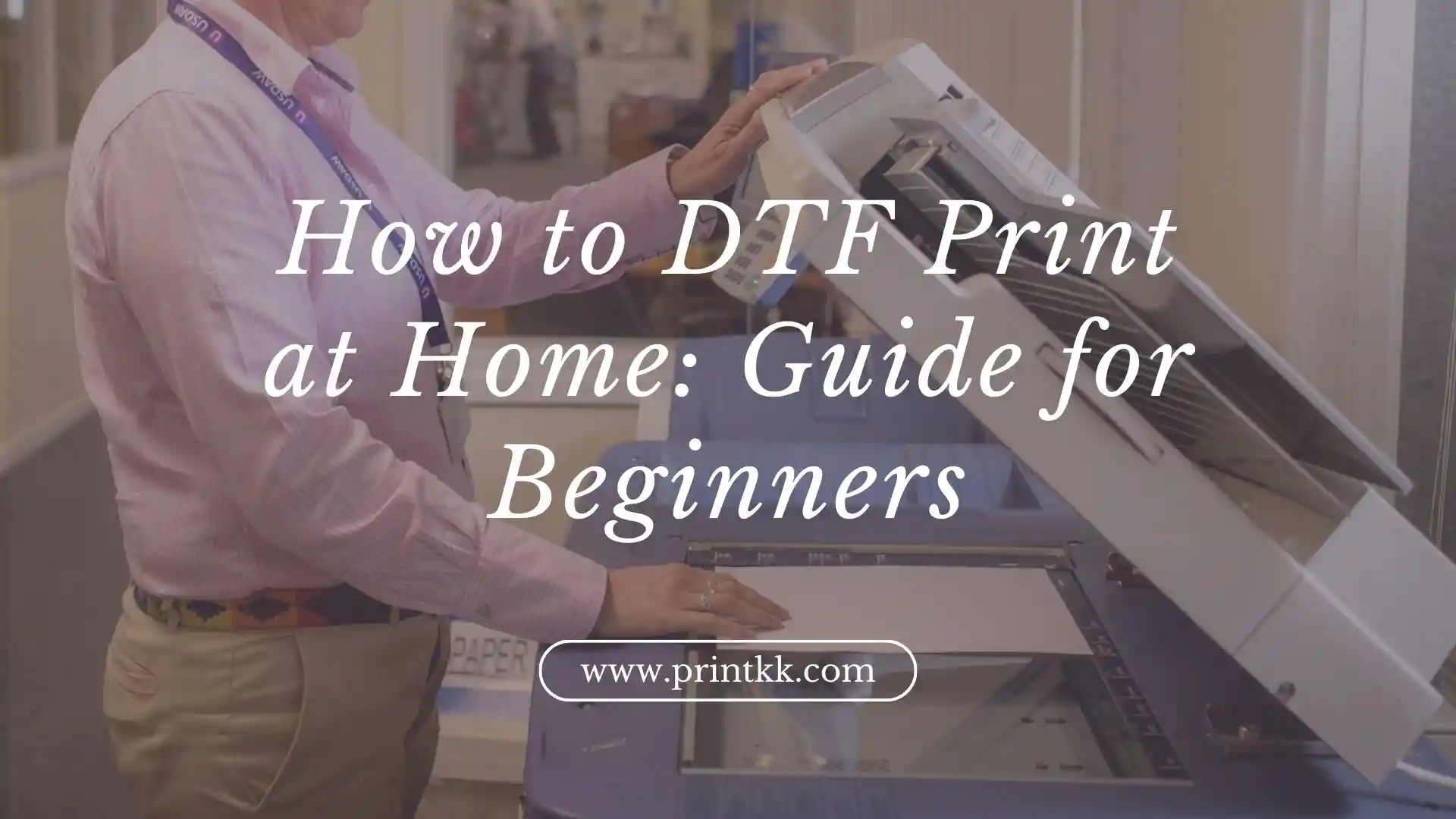
Ever wondered how to create your own custom t-shirts, hoodies, or tote bags without paying for expensive services?
In this guide, you'll learn how to DTF print at home step by step. It's easier than you think, and you don't need to be a pro.
By the end, you'll feel confident making vibrant, long-lasting designs right from your own space. Let's dive in and make your creative ideas come to life.
What Is DTF Printing?
DTF, or Direct-to-Filmprinting, is one of the easiest ways to create high-quality custom designs at home.
Unlike other methods, it works well on both light and dark fabrics without losing detail. Once you understand the process, it becomes much simpler than it looks.
The process has a few key steps you should know:
- Print your design onto a PET film with special DTF inks.
- Sprinkle adhesive powder over the wet ink so it sticks properly.
- Cure the design and transfer it onto your fabric using a heat press.
What makes DTF practical for beginners is the flexibility. You can print a few shirts or a small batch without worrying about complicated setups.
The prints are soft, durable, and maintain their color after washing.
Knowing this upfront can save you trial-and-error time and help you focus on creating designs that actually sell or gift well.
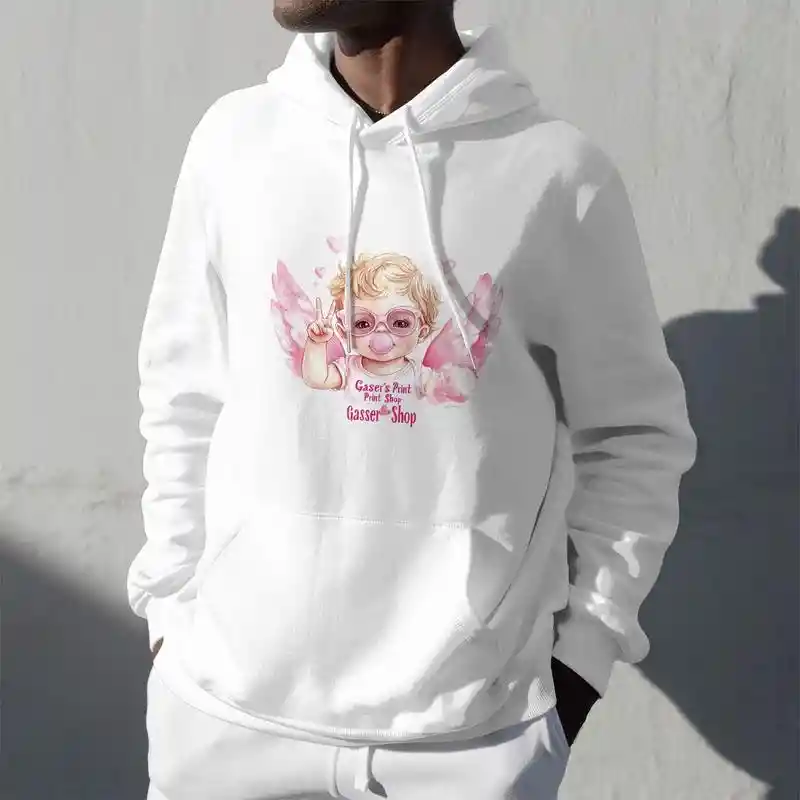
DTF Printing Pros and Cons
Pros of DTF Printing
- Works on many fabrics – You can print on cotton, polyester, and blends without worrying too much about the material.
- Bright and durable colors – Your designs will stay vibrant even after multiple washes.
- No special screens needed – Unlike screen printing, you don't need complicated tools, so it's easier to start at home.
- Great for small batches – Perfect if you want to make just a few shirts or gifts without large orders.
Cons of DTF Printing
- Initial setup can be tricky – You need a printer, special ink, and powder, which might take time to learn.
- Can be messy – Handling powders and inks at home can get a little chaotic if you're not careful.
- Not always fast for large orders – Printing many items takes longer than some other methods, so it's best for small projects.
- Color accuracy may vary – Sometimes what you see on screen isn't exactly what prints, so you might need test prints.

Custom Adult Double-Layer Bucket Hat (Made in USA) - Print-On-Demand - PrintKK
How to DTF Print at Home for Beginners
1. Get the Right Equipment
To start DTF printing at home, you need the right tools.
This includes a DTF printer or a modified inkjet printer, DTF transfer film, DTF inks, a heat press, and DTF powder.
Not all printers work for DTF, so double-check compatibility before buying inks. You'll also need parchment paper or a non-stick sheet to protect your prints during pressing.
Investing in quality materials may cost more upfront, but it will save you frustration and give your prints a professional look.
Having the proper setup from the beginning ensures you avoid wasted prints and damaged equipment.
2. Prepare Your Design Properly
Your design file is critical for good results. Use software like Photoshop, Illustrator, or Canva to make sure your image is high resolution.
Mirror your design before printing because it flips when applied to the garment. If your image has small details, enlarge them slightly so they don't blur during transfer.
Bright, bold colors show best on fabrics, and simpler designs are easier to print cleanly when you're just starting.
Always check your colors and sizing before printing to avoid wasting time and materials. Proper preparation makes your transfers look crisp and professional.
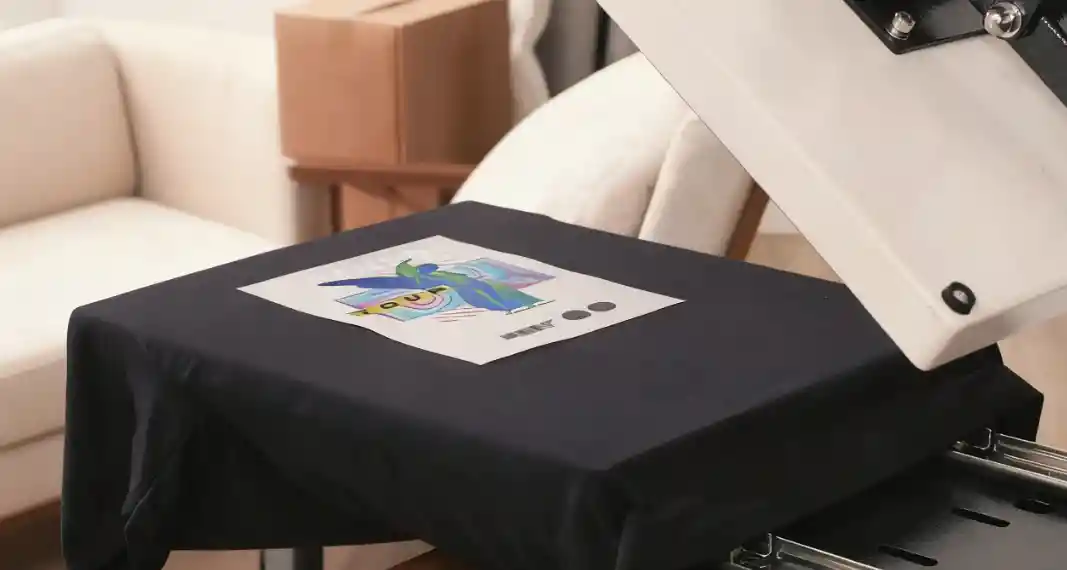
3. Printing Your Transfer
After your design is ready, print it on the DTF transfer film. Make sure the ink fully covers your design and dries slightly before applying the powder.
Use DTF powder evenly—sprinkle lightly and shake off the excess. The powder helps the ink stick to your fabric and keeps your design vibrant after washing.
Small brushes or sifters work well for even coverage. Avoid clumping powder in one area, as it will cause uneven prints. Let the powder sit for a few minutes before curing, so it properly bonds with the ink.
Taking your time in this step is key to getting a durable, high-quality transfer.
4. Heat Press and Apply
Once your transfer is powdered, cure it using a heat press. Set the press to the right temperature (usually 160–170°C) and time (around 15–20 seconds) depending on your fabric.
After curing, place your transfer carefully on the garment, cover it with a protective sheet, and press again using firm, even pressure. Avoid moving the transfer during pressing, or the design may smear. Let the garment cool completely before peeling the film.
Following these steps carefully ensures your design sticks well, stays vibrant, and lasts through multiple washes.
DTF Printer Setup and Maintenance
Choosing and Setting Up Your Printer
Pick a printer that works with DTF inks and films. Make sure it is compatible with white ink circulation if you plan to print white underbase.
Place your printer on a stable, flat surface to avoid vibrations. Connect it to your computer and install the correct drivers.
Checking the setup carefully before printing saves a lot of frustration later and ensures your first prints look clean.
Installing Inks and Films Properly
When filling your printer with inks, handle them carefully to avoid spills. Shake the white ink bottle well before use to prevent settling.
Load the DTF film according to the printer instructions. Make sure the film is flat and aligned correctly.
Using good-quality inks and films not only improves print quality but also prevents clogs and reduces maintenance problems.
Daily and Weekly Maintenance
Clean the printer nozzles and heads regularly to avoid clogging, especially if you use white ink.
Check for air bubbles in the ink lines and purge them if needed. Wipe down surfaces to remove any dust or stray powder.
A small daily and weekly routine keeps your printer in top shape and ensures consistent print quality over time. Think of it as caring for your printer like it's a delicate tool.
Troubleshooting and Preventing Problems
Sometimes prints might have missing lines, faded colors, or white ink issues. Check the nozzle status and run a cleaning cycle if needed.
Keep spare dampers or tubes ready in case of blockages. Avoid leaving inks idle for long periods, as it can dry out and damage the printer. With regular care and quick troubleshooting, you can prevent major problems and keep your printer running smoothly.
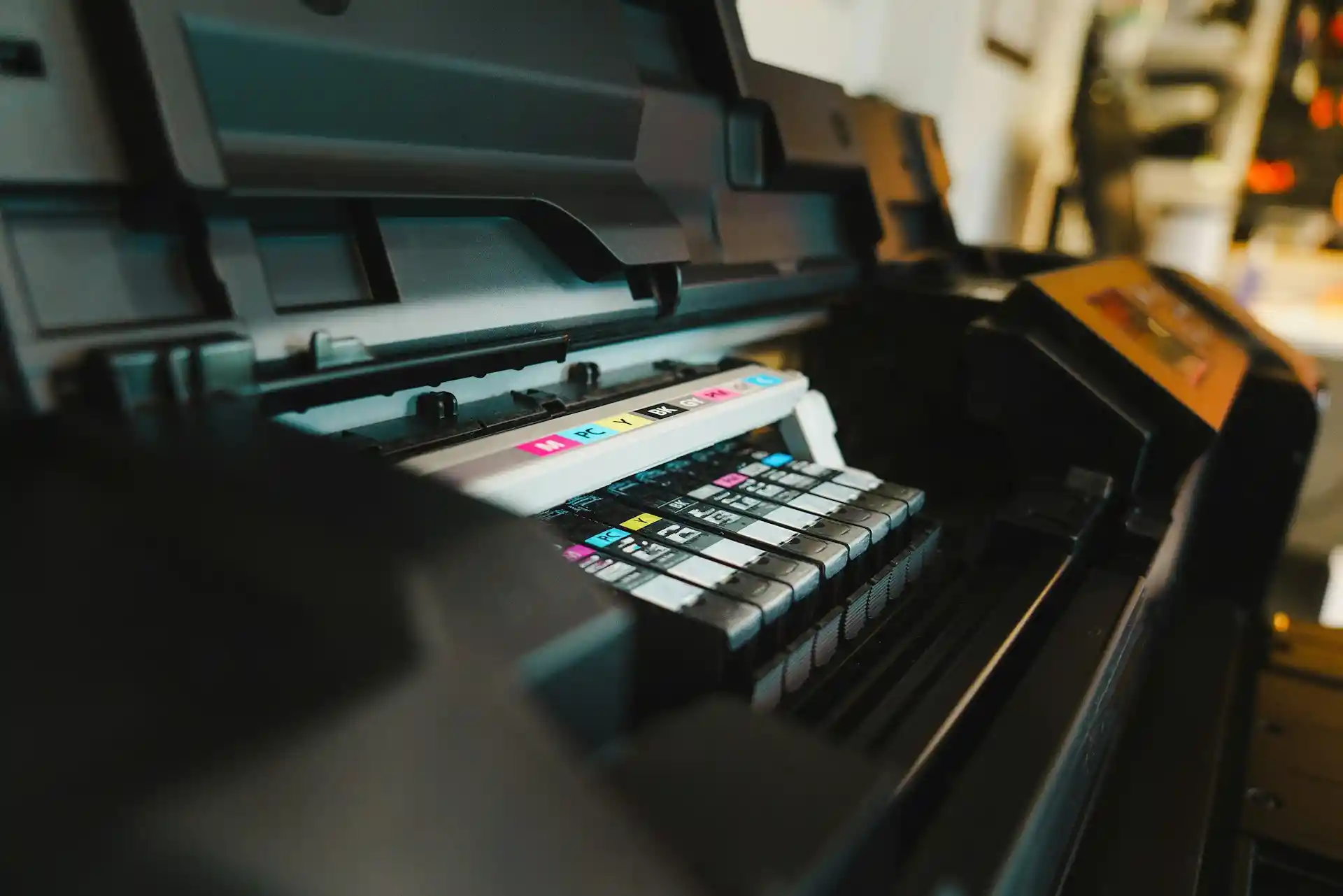
Safe Layout and Protection for DTF Printing at Home
Wear Proper PPE
Always protect yourself when working with DTF materials. Use a respirator (N95/FFP2) to avoid breathing in fine adhesive powder.
Wear gloves made of nitrile or latex to keep your hands safe from inks and powders. Don't forget goggles or safety glasses—they stop powder from getting into your eyes.
Ensure Good Ventilation
Make sure your workspace has good airflow. Open windows and use fans to move air from the room to the outside.
A small HEPA air purifier can help trap tiny powder particles. Also, try to direct the airflow away from other rooms to prevent spreading dust and fumes.
Divide Workspace Into Zones
Keep your work area organized by creating separate zones for:
- Printing
- Powdering
- Heat pressing
Use tables, trays, or mats to define these zones and catch spills. Keep unrelated equipment and furniture out of the workspaces. Clear zones help avoid accidents and make cleanup easier.
Contain Powder
Adhesive powder can spread quickly, so take steps to contain it:
- Use shallow trays when applying powder
- Place mats or protective sheets under your workspace
- Consider plexiglass or small barriers to block powder from drifting
Being careful here makes your prints cleaner and reduces the mess in your home.
Store Inks, Powders, and Films Safely
Keep all DTF supplies in closed containers when not in use. Store powders and inks away from heat or sunlight to prevent damage.
Clearly label everything so you won't mix things up by mistake. Safe storage helps your materials last longer and keeps your workspace tidy.
Maintain Safe Equipment Placement
Always place your heat press on a stable, non-flammable surface.
Make sure it stays far from walls, curtains, and other flammable items. Let the equipment cool completely before moving or cleaning it. This simple habit prevents accidents and keeps your workspace safe.
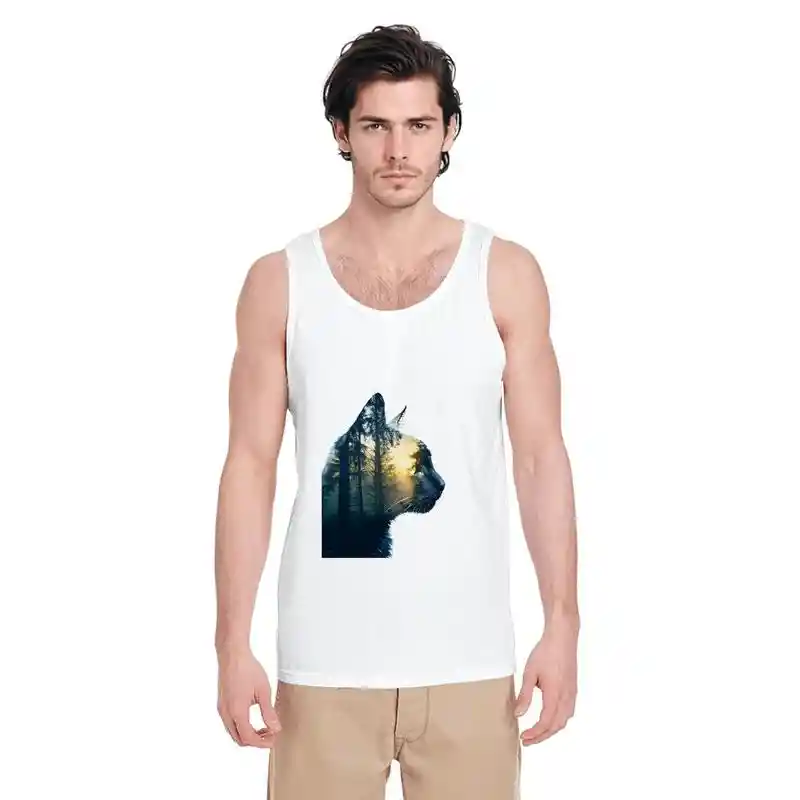
Print on Demand ZUNI Men's Cotton Tank Top Customized Services - Men's Clothing - PrintKK
DTF Printing for Small Businesses: DIY vs Outsourcing
If you're running a small business, deciding between doing DTF printing yourself or outsourcing can be tricky.
DTF printers can cost less than $3,000, but they require a lot of hands-on work. You'll need to handle every step manually—applying powder, curing prints, and keeping the machine in top shape.
Maintenance can quickly become a headache, especially when dealing with white ink.
Outsourcing is a practical alternative, especially if your volume is low. You can:
- Order small batches from reliable online DTF suppliers.
- Avoid spending time troubleshooting or maintaining expensive equipment.
- Ensure professional-quality prints without risking your designs.
For beginners or small shops, sending designs out often saves time and stress. Look for trusted companies with fast shipping, consistent colors, and respect for your artwork.
This way, you can focus on growing your business instead of fixing printers.
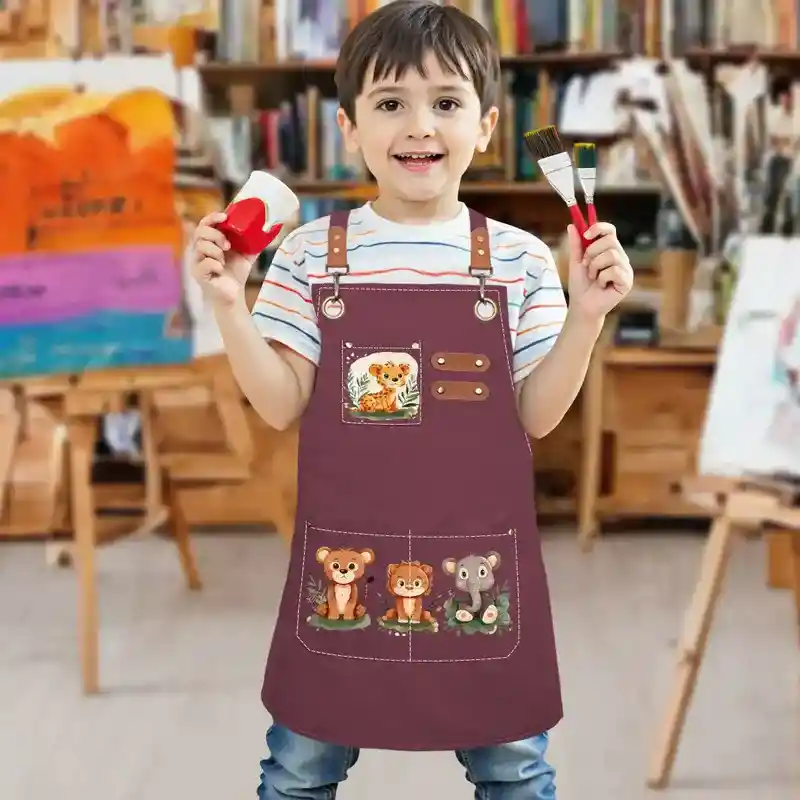
Custom Children's Canvas Cross Back Apron with Pockets - Print-On-Demand - PrintKK
Get High-Quality DTF Prints at Home with PrintKK
Using PrintKK to create DTF prints at home is simple and fun.
You can browse their wide range of products like t-shirts, hoodies, and hats. Then, use the online design tool to upload your artwork, add text, or customize colors.
Once your design is ready, you can place your order directly through the platform, and PrintKK takes care of the printing and shipping.
One of the great advantages of using PrintKK is their cost-friendly and convenient setup:
- Products shipped to the United States don't charge seller tax fees.
- Many items made in the US come with free shipping.
- All products are high quality and low cost, making them perfect whether you are buying for yourself, gifts, or selling online.
PrintKK also offers an AI Image Tool that helps you enhance your designs quickly. Even if you're new to DTF printing, you can:
- Add creative details to your designs
- Adjust colors and backgrounds easily
- Experiment with new ideas without stress
With these tools and benefits, creating personalized, high-quality DTF prints at home becomes easy and enjoyable. Whether you're gifting or selling, PrintKK helps you get professional results without a complicated setup.
Read More:
- How to Use DTF Transfer Film: Step-by-Step Guide
- DTG vs DTF Printing: Which Method Is Better for You?
Expert Tips
Now you have a clear idea of how to DTF print at home. You know what DTF printing is, the basic process, and the equipment you need.
If you want to take it further, using PrintKK makes it easy to turn your DTF printing into a small business.
The platform handles printing, shipping, and product options, so you can focus on your designs.
With this approach, you can enjoy making personalized items, improve your skills over time, and even start selling your creations with minimal stress and setup.
FAQs
How long does DTF printing last?
DTF prints are durable and can last for many washes if applied correctly. With proper heat pressing and care, designs generally maintain their color and adhesion for months to years on standard fabrics.
Is DTF printing better than sublimation?
DTF is more versatile than sublimation because it works on both light and dark fabrics. Sublimation works best on polyester, while DTF can print on cotton, blends, and other materials.
What equipment and materials do I need for DTF printing at home?
You'll need a DTF-compatible printer, white and color inks, transfer films, adhesive powder, and a heat press. Basic tools like trays, gloves, and cleaning supplies help keep your workspace safe and organized.
Can I print DTF on a regular printer?
Regular printers usually aren't designed for DTF inks or white ink circulation. Modifying one can damage it, so it's better to use a printer specifically compatible with DTF for safe, consistent results.
What do I need to start your own t-shirt printing business?
To start, you need a reliable DTF printer, heat press, quality inks, and films. Using services like PrintKK can help you source materials or get high-quality prints while you learn and grow your business.










 Global Shipping
Global Shipping


 Made in USA
Made in USA

































